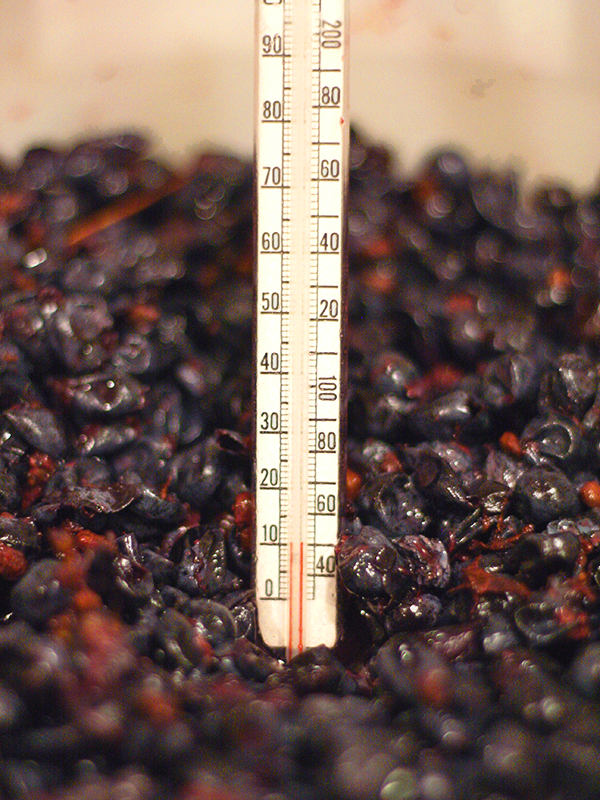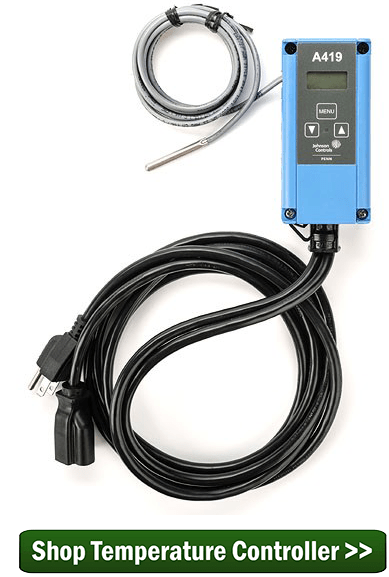 Hi all!
Hi all!
I’m still just waiting for my Cellar Craft Sterling California Chardonnay Reserve to finish clearing so I can move onto the next stage, but for now I wanted to talk a little bit about a specific stage in the winemaking process that I’ve noticed is never present in any of the winemaking kits I’ve made so far…
Cold stabilization.
Cold stabilization in wine making is a common practice, so why is it not done in any of the home wine making kits I’ve made?
Cold stabilization is basically the process of keeping tartaric acid crystals from forming in the wine after it has been bottled. If a wine has not gone through cold stabilization before bottling, sticking the wine in the refrigerator, cellar, or otherwise very cold room may cause tartaric acid crystals, or “wine diamonds” to form. These crystals aren’t bad for you (it’s just cream of tartar!) and won’t hurt the wine, but some think it’s better for aesthetic purposes.
Tartaric acid is naturally present in grapes, so theoretically any wine is at risk of developing tartaric acid crystals or “wine diamonds” when at the right temperature or if the wine just jostled around or bumped just right. There has to be a concentration of tartaric acid higher than what can be handled by the wine in order for these crystals to be created under those circumstances, but for consistency, winemakers usually perform a cold stabilization prior to bottling regardless.
Actually performing a cold stabilization is actually pretty simple according to what I’ve read online.
All you have to do is before bottling, reduce the temperature of your wine to 30°F or lower for at least 36 hours. Doing this might be a little difficult if you don’t have a space refrigerator or if you’re not making your wine in the middle of winter in a cold locale, but if you have the ability, it wouldn’t hurt to just do it.
I also read that it is recommended you add potassium bitartrate powder to the wine right before you drop the temperature, as the presence of the potassium bitartrate (cream of tarter) will help pull any tartrate crystals out of the wine faster than if you were simply relying on the temperature drop.
The amount of alcohol present in your wine could affect the ideal cold stabilization temperature, so a simple mathematical equation is all you need to figure that out. All you have to do is take the alcohol level of your wine, divide that by 2, and then subtract 1. This will get you the ideal cold stabilization temperature for your wine in Celsius.
Now that I’ve read about how to do a cold stabilization in wine making, I have a feeling I know why it’s not listed on the instructions for any home winemaking kit I’ve ever made. It’s probably related to the fact that you need an entire separate refrigerator or need to be living in a place where it’s very cold outside when you’re making that wine in order to successfully cold stabilize your wine. Of course, they sell cooling jackets for stainless steel tanks, but that’s not something the home winemaker has.
———————————–
 My name is Leigh Erwin, and I am a brand-spankin’ new home winemaker! E. C. Kraus has asked me to share with you my journey from a first-time dabbler to an accomplished home winemaker. From time to time I’ll be checking in with this blog and reporting my experience with you: the good, bad – and the ugly.
My name is Leigh Erwin, and I am a brand-spankin’ new home winemaker! E. C. Kraus has asked me to share with you my journey from a first-time dabbler to an accomplished home winemaker. From time to time I’ll be checking in with this blog and reporting my experience with you: the good, bad – and the ugly.
